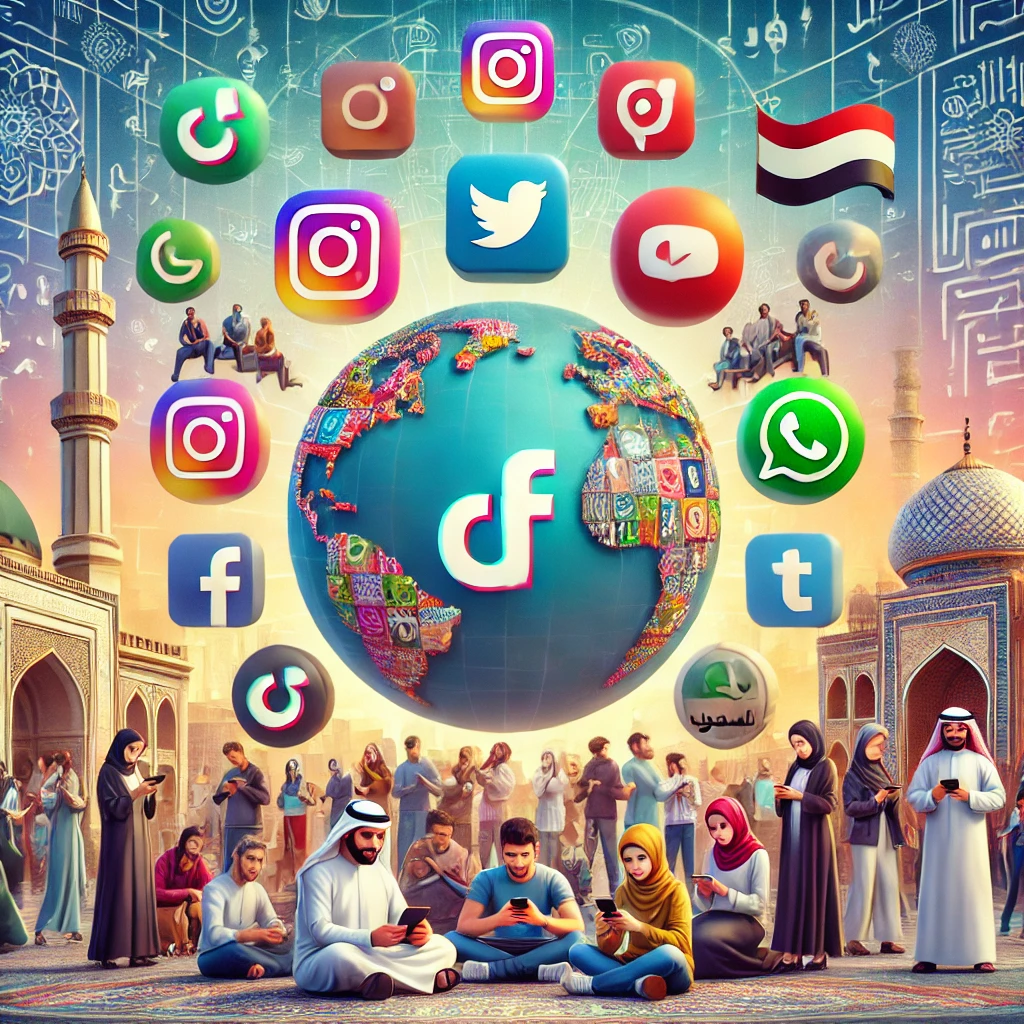The Middle East is a region characterized by its rich cultural diversity and rapidly growing digital landscape. Social media has become an integral part of daily life, providing a platform for communication, entertainment, and business. As of 2025, several social media platforms dominate the scene, each catering to different user needs and preferences. This article explores the most popular social media platforms in the Middle East and their unique appeal in this dynamic region.

1. WhatsApp
Widespread Communication: WhatsApp is the most popular messaging app in the Middle East, used extensively for personal and business communication. Its end-to-end encryption, ease of use, and group chat features make it a preferred choice for staying connected with family, friends, and colleagues.
Business Adoption: Many businesses in the Middle East utilize WhatsApp for customer service and marketing, leveraging its wide reach and direct communication capabilities (Statista, 2021).
Sources:
- Statista. (2021). WhatsApp usage in the Middle East. Link
2. Facebook
Community Building: Facebook remains a significant platform in the Middle East, popular for its community-building features, including groups and pages. It is widely used for sharing news, events, and social causes.
Advertising Power: The platform’s advanced advertising tools allow businesses to target specific demographics effectively, making it a crucial part of digital marketing strategies in the region (We Are Social, 2021).
Sources:
- We Are Social. (2021). Digital 2021: Middle East. Link
3. Instagram
Visual Appeal: Instagram’s focus on visual content makes it particularly popular among younger audiences in the Middle East. Users engage with photos, videos, and stories, making it a vibrant platform for personal expression and brand promotion.
Influencer Culture: The platform is a hub for influencers who drive trends and engage followers with lifestyle, fashion, and beauty content, which resonates strongly in the region (Hootsuite, 2021).
Sources:
- Hootsuite. (2021). The Middle East and North Africa Digital Report 2021. Link
4. Twitter
Real-Time Updates: Twitter is widely used in the Middle East for real-time news updates and public discourse. It is a go-to platform for following current events, political discussions, and sports.
Public Figures: Many public figures, including politicians, celebrities, and influencers, actively use Twitter to communicate with the public, making it a key platform for staying informed and engaged (Pew Research Center, 2021).
Sources:
- Pew Research Center. (2021). Social Media Use in Emerging Economies. Link
5. Snapchat
Youth Engagement: Snapchat is highly popular among teenagers and young adults in the Middle East. Its unique features, such as disappearing messages, AR filters, and Discover content, appeal to the younger demographic.
Creative Expression: The platform encourages creative expression and real-time sharing, making it a fun and engaging way for users to connect and share their experiences (Statista, 2021).
Sources:
- Statista. (2021). Snapchat usage in the Middle East. Link
6. TikTok
Viral Content: TikTok’s short-form video content has taken the Middle East by storm. Its algorithm-driven content discovery and viral trends make it a popular platform for entertainment and creative expression.
Brand Engagement: Brands in the Middle East are increasingly leveraging TikTok for marketing, utilizing its influencer partnerships and engaging video content to reach younger audiences (Business Insider, 2021).
Sources:
- Business Insider. (2021). TikTok’s growth in the Middle East. Link
7. LinkedIn
Professional Networking: LinkedIn is the leading platform for professional networking in the Middle East. It is widely used by professionals for job searching, industry news, and business networking.
Recruitment Tool: Companies in the region use LinkedIn for recruitment, employer branding, and connecting with potential clients and partners (Hootsuite, 2021).
Sources:
- Hootsuite. (2021). LinkedIn usage in the Middle East. Link
Conclusion
The social media landscape in the Middle East is diverse, with different platforms catering to various needs and preferences. WhatsApp, Facebook, and Instagram are staples for communication and visual content, while Twitter, Snapchat, and TikTok cater to real-time updates, youth engagement, and viral trends. LinkedIn remains crucial for professional networking and business development. Understanding the popularity and usage of these platforms can help businesses and marketers effectively engage with audiences in this dynamic region.